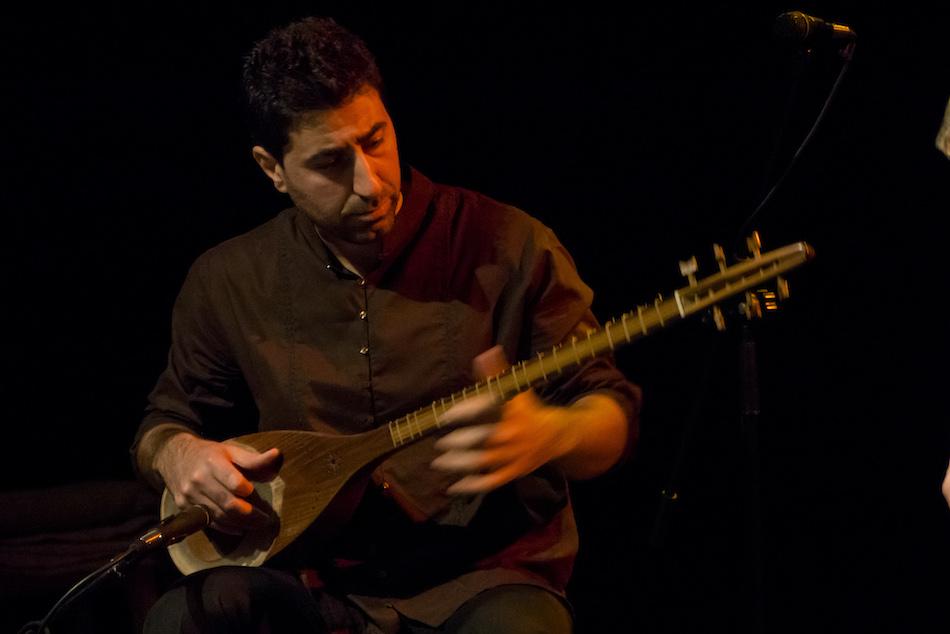More about the music in The Shahnameh
Arash Moradi was born in the North West region of Kurdish Iran, a musically rich area, to a musical family – his father Ali Akbar Moradi is Iran’s leading tanbur player. For centuries, the music of the tanbur has been considered sacred within this community, with songs and chants preserved and passed on through transmission from master to apprentice across generations.
In creating the music for this performance, Arash works with the modes of Persian classical, Kurdish maqam and Sufi music, the qualities of the story and the style of each instrument, as well as themes known to be associated with characters. While setar and tanbur are traditional instruments with long histories, the shurangiz is a relatively new instrument more suitable to Persian classical music. In a drive to protect music kept alive in the Kurdish Yarsan community for thousands of years, Arash’s father, Ali Akbar Moradi spent decades collecting, learning and recording 72 original and sacred maqams so that contemporary musicians could improvise and create new compositions rooted in traditional culture. Arash makes great use of this legacy, using instruments with a variety of phrases and colours that enable him to capture the different textures and qualities of each story.
Persian classical music works through a combination of improvisation and composition around seven modes (scales and tunes) each with a particular character. Learning respect for the music as well as openness to the personal response of each musician is integral to how it is taught. Compositions alternate between contemplative pieces and athletic displays of musicianship, and incorporate lyrics written by Sufi poets. In 2009, radifs (the body of modes, often distinctive to the teachings of each master) were registered on the UNESCO List of the Intangible Cultural Heritage of Humanity.
Music is an integral feature within the storytelling tradition associated with the Shahnameh. Rustam is said to have discovered the first tanbur hanging in a tree. He took it down and found his fingers fit the strings perfectly There is still a maqam called Tarze Rustam which is believed to be over 1000 years old..
